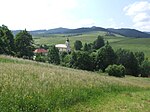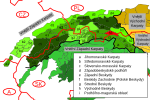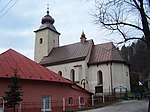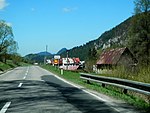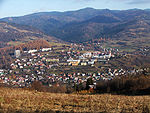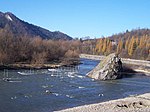Veľký Lipník

Veľký Lipník (Rusyn: Великый Липник; Ukrainian: Великий Липник; Hungarian: Nagyhársas) is a former Lemko village and municipality in Stará Ľubovňa District in the Prešov Region of northern Slovakia. The village is traditionally inhabited by Rusyny/Ruthenians , as one of their westernmost settlements. There is Greek Catholic church built in 1794. The village of Vel’ky Lipník began behind the Spišská Magura mountain range which is part of the outer western Carpathian mountains which reach to the international border with Poland. Settlement began in this area early but in the second half of the 13th century during the reign of Hungarian King Béla IV, Ruthenians and Germans settled in the area during the years of 1235 to 1270. During the years 1308 to 1342 Hungarian King Karol Róbert donated this area to Julius Gorgey from Spišský Hrhov-Gargov. In 1314 the first written mention of Veľký Lipník was made. During the 15th and 16th century the village was inhabited mostly by Ruthenians from Southern Poland (Galicia.) They mostly worked as farmers and also bred various livestock. Due to their working mostly on farms, the village crest which was utilized from the 16th to the 19th century denoted this trade.
Excerpt from the Wikipedia article Veľký Lipník (License: CC BY-SA 3.0, Authors, Images).Veľký Lipník
Geographical coordinates (GPS) Address Nearby Places Show on map
Geographical coordinates (GPS)
| Latitude | Longitude |
|---|---|
| N 49.366666666667 ° | E 20.516666666667 ° |
Address
Pastierske
065 33 (Veľký Lipník)
Region of Prešov, Slovakia
Open on Google Maps
